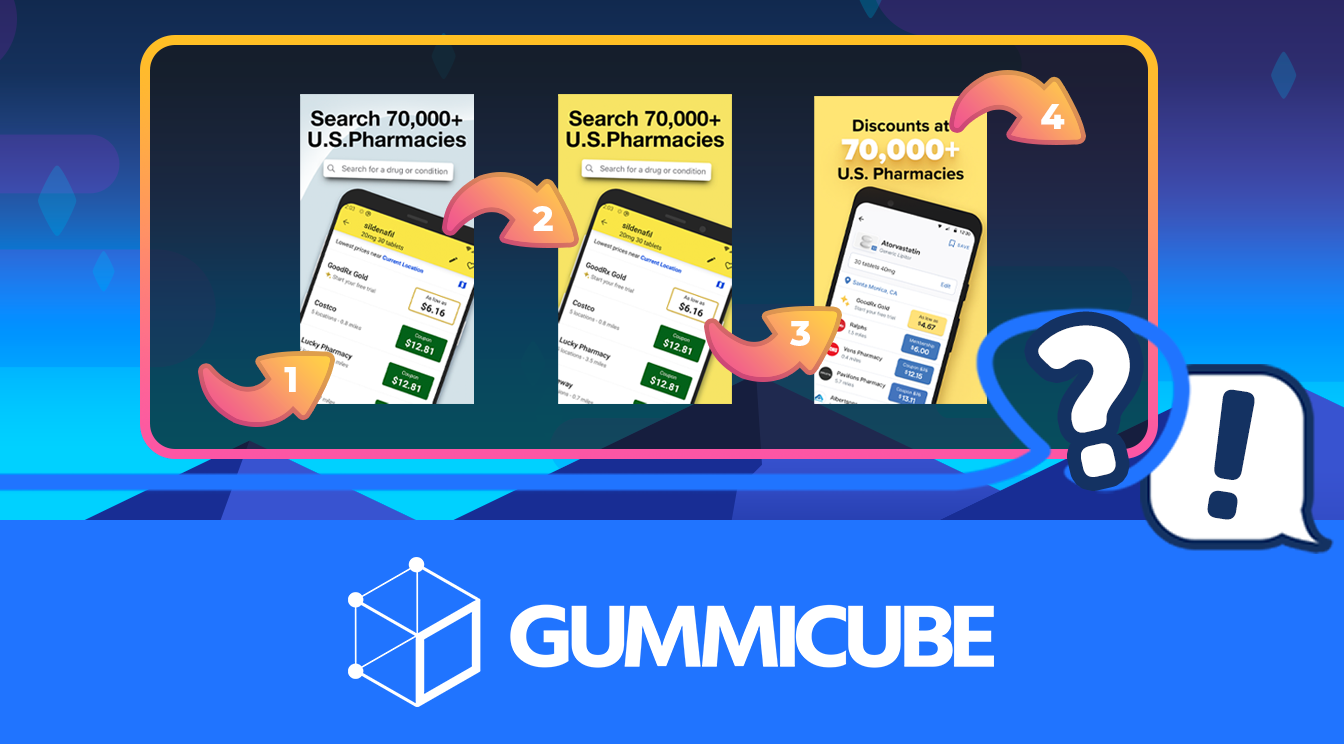Apple Search Ads: How & Where to Start
August 4th, 2018


by David Quinn
VP of Strategy & Partnerships at Gummicube, Inc.
It’s no secret that 65% of downloads come from search, and Apple Search Ads has been helping developers acquire millions of users since it launched in 2016. Search ads can allow developers and marketers to drive impressions to users intending to download an app with the features, functionality, or competitor relevancy of their app. This is makes it one of the most effective ways to drive installs from more engaged and active users. Starting a campaign is relatively simple. Developers won’t have to worry about creating additional ad copy and creatives, since Apple pulls this from the app’s existing store listing metadata. While the creation of an ad is one less worry, developers will have to consider what goes into Search Ads and learn how and where to start in order to run a successful campaign.
Understanding the Difference Between Basic & Advanced
In December 2017, Apple released two new programs to help developers further improve their app’s presence in the App Store. Search Ads Basic and Search Ads Advanced were built to help developers expand their app’s audience and visibility in a way best suited to their needs. Here are the differences between them:
Search Ads Basic:Offers developers cost-per-install (CPI), meaning they’re only paying for installs
Ability to set up their account with a monthly budget
Option to start and stop a campaign and adjust the budget at any time
Essentially “training wheels” for Search Ads Advanced
Search Ads Advanced:
Developers have access to Apple’s full suite of tools
Can control campaigns and the audiences that see their ads
Ability to choose keywords and explore searches with the Search Match feature
Combine Broad Match and Exact Match to better control how keywords match user searches
Can add negative keywords to avoid ensure that traffic is directed to the correct campaign
It’s important to understand the offerings in each program to determine which one meets your needs. Search Ads Basic is for those that are interested in trying paid search but do not have the time or experience to manage a campaign. Search Ads Advanced is for more seasoned advertisers who want full control over their paid campaigns.
Campaign Structure
Campaign structure is incredibly important and directly impacts how well it will perform. First, developers will have to select the app and storefront they want to work with. Next, they’ll have to name the campaign and set up budgets along with daily caps. When it comes to naming the campaign, developers should have a clear strategy in mind to give them direction before they start targeting and bidding on keywords. Without having a specific strategy, developers can risk focusing on the wrong keywords that aren’t relevant to their app or audience. Just to name two options, developers can create campaigns that focus on:
The budget is set at the campaign level and divides the money that will be spent across all ad groups. It’s mandatory to setup a budget, however, it can only be adjusted higher at any given time NOT lower. It’s important to note once the campaign budget maxes out, it will automatically turn off and won’t resume until it’s raised. Controlling daily spend is done by placing a daily cap on the campaign, and once it gets close to reaching the max cap, it will slow down ad placement but will continue to display the ad if it thinks users can be acquired at a lower cost. This can will cause a campaign to go above its daily cap, at most by 10-15%.
Ad Groups & Targeting Keywords with Broad & Exact Match
Ad groups are collections of the keywords developers are targeting and can have a specific bid amount set up similar to the campaign budget. When it comes to determining keywords, developers should think about what they’re already targeting based off their ASO strategy. They can then add more keywords that are general (mobile game, category, etc.) and specific (app features, game play, characters, etc.) to reach their intended users. Developers should also take advantage of the various match types that Search Ads offers to control how their keywords match user searches. Broad Match: Search Ads defaults to this type and ensure that the ad runs on relevant variants of a keyword. This includes singular, plural, misspellings, synonyms, and related searches and phrases. Exact Match: This type allows developers to control when the ad appears and can target specific terms and variants. With Exact Match, however, ads may see fewer overall impressions, but the tap-through rates (TTR) and conversion might be higher. Developers can also pause a keyword and add new ones, but they can’t be deleted once it’s added. When running a broad campaign, developers should utilize Campaign Negative Keywords to ensure that traffic for search queries gets directed to the proper campaign. A developer’s job isn’t done after creating the campaign and ad groups and determining which keywords they want to target/bid on. They’ll need to constantly monitor how their campaigns and ad groups are performing to ensure that they’re reaching their audience.
Ensure Success & Avoid Pitfalls
While the above tips will greatly help developers get started on creating a campaign strategy, they’ll also have to note that there are some serious mistakes that can occur. Some include:
Running campaigns with irrelevant keywords
Low Tap Through Rate
Relying solely on broad/exact match
Bidding on “cheap” keywords
Not being patient
Developers can’t just dive head first into Search Ads – they need to carefully examine the different programs Apple offers and take the time to set up campaigns and ad groups that will benefit their app. It’s also important that they give their campaigns at least seven to ten days before making changes to enable the algorithm to learn traffic patterns. By avoiding Search Ads missteps, developers will run successful campaigns that greatly help their app reach larger audiences without breaking the bank. It’s also critical to factor in the importance of a strong organic ASO strategy. Understanding an app’s overall keyword ranking profile allows for an understanding of the keywords Apple (and users) find an app relevant for. This can help guide which keywords may be best to target in a Search Ads campaign without having to experiment as much with paid marketing spend to discover the most relevant terms. Positive reciprocity can also be gained between ASO and Search Ads: Click-Through-Rate (CTR) from Search Ads can help improve your ranking for that term in organic search, and metadata can be structured in a way to best organically rank for a keyword performing well in Search Ads. Just as it’s important to research how your impressions, conversions and cost are performing for Search Ads, it’s important to know how your organics perform and what to target. With a well-planned Search Ads strategy, developers are can see benefits like improvements on their conversion rates, CPI, CPT and their return on investment (ROI).
Similar Articles

Posted on October 6th, 2023
Ghostly happenings are among us... and in your app listing too? If you aren't leveraging the power of app seasonality to make relevant tweaks to your store listing you're leaving precious engagement and conversions on the table.

Posted on November 8th, 2021
Developers on the iOS App Store should plan in advance of the upcoming Holiday Schedule to allow enough time for apps to get approved during the busy holidays.

Posted on November 1st, 2021
App Store Optimization is an involved process that should be regularly revisited based on recent changes in trends. Iteration is one of the key drivers for success in ASO.





